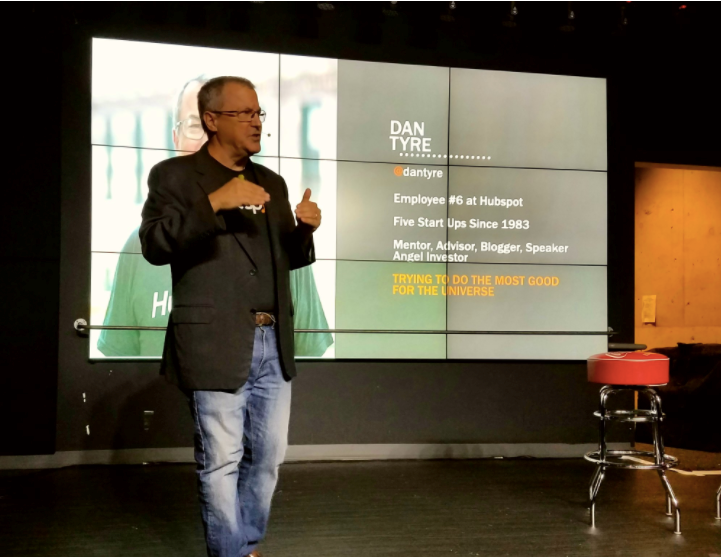Why Every Leader Should Start with a Listening Tour
When I take on a new team or division, I always start with a Listening Tour — meeting everyone, asking questions, and uncovering what’s really going on. Here’s how I do it and why it works.
When I first started my business career, I worked for a hyper-growth hardware company that scaled from $100,000 in annual revenue to $1.4B over nine years. They experienced explosive growth for almost a decade, and when you have that type of growth, there are typically some areas of the business that don’t perform to expectations.
As I was promoted into a management function, I got the opportunity to help scale underperforming divisions as a so-called “turnaround expert.”
Understanding the Challenges
Over several years, I worked in different divisions and geographies trying to assess the leadership and management teams, identify and quantify the short-term challenges, and quickly address the core problems to get each region back on track.
After I was assigned a new geography or region, I always started the process by reviewing the monthly financial results from the previous two years. Financials typically provided great clues to the biggest issues facing the division—and whether they were getting better or worse.
The second step in my turnaround plan was to go on a Listening Tour—talking with everyone in the organization to get perspective.
Why a Listening Tour Matters
The primary goal of a Listening Tour is to gather input, concerns, perspectives, and ideas from the people you serve and lead. For me, I also wanted to:
-
Meet everyone in the organization to get a full picture of what was going on
-
Begin to make a personal connection with everyone in the organization
-
Understand the thoughts, opinions, and ideas of all levels
-
Start to draw conclusions about the people, bottlenecks, and potential solutions
A Listening Tour was also a great way to get to know the team, give them a chance to meet with me one-on-one, and make a strong first impression.
Planning the Tour
It was always helpful to prepare in advance to get the maximum value from the process. I thought through who I should meet first and in what order.
My preference was to start with a brief meeting with senior leaders to explain what I was trying to accomplish so they didn’t feel threatened or out of the loop. Then, I liked to meet with the least senior people first and work my way up, making a statement about my management philosophy—that everyone contributes equally.
Sometimes this wasn’t logistically possible or politically viable in very rigid organizations. In those cases, I defaulted to meetings across all levels in alphabetical order by last name, which was an easy and neutral way to resolve the situation.
Step 1: Preparing for Each Individual Meeting
I always reviewed LinkedIn to find common ground, get a sense of personality, and understand how someone explained their career. I wanted to know if they were an overachiever—maybe someone who earned a recognition event like President’s Club or 100% Club—or if they were currently on a Performance Improvement Plan.
I set meetings a week in advance via calendar invite (subject line: [Employee Name] & Dan Tyre Intro Meeting). Whenever possible, I met in person and booked a private, quiet room with good internet for 30 minutes. I brought a notebook—because I’m an obsessive note-taker.
Thirty minutes seemed to be the right amount of time to meet everyone—long enough to take stock of the basics and start to dig into the real issues.
Step 2: Setting the Agenda
I made sure to set the right tone so employees knew they weren’t getting fired or reprimanded. That way, they could speak freely.
My agenda went something like this:
“My name is Dan, and I am PUMPED that I have an opportunity to lead this team for the next few months and meet 100 new people. I’ve been looking forward to this meeting all week!”
(Big smile.)
This might not be the right leadership style for everyone, but I wanted to be upbeat and genuine. I’d usually mention a positive attribute I found on their profile to show I’d done my homework—it goes a long way toward building trust and respect.
Then I’d say:
“This is an introductory meeting, so I want to get to know you, ask a few open questions about this region, and understand your ideas, thoughts, and opinions on how to make a positive impact.”
I’d also confirm logistics:
- Do we have the entire 30 minutes?
- Is there anything you want to make sure we cover?
- Is it okay if I take notes?
And usually end with something personal like:
“Hey, you graduated from Providence College in 2015. What a great school.”
Step 3: Establishing a Thoughtful Dialogue
I liked to start with these four questions—they always got us off on the right foot.
Q1. Tell me about you.
This question works in almost any introductory meeting. It helps me understand their communication style, vocabulary, and personality.
If they asked what I wanted to know, I’d say:
“Give me the six-minute version of you.” 🙂
Q2. Tell me about your [Company Name] career.
This gave me a sense of their comfort level in the organization and their attitude toward the company.Were they thrilled to be there or feeling slighted? Was this a job or a career? Did they love what they were doing or just putting in time? Did they take responsibility or assign blame?
Q3. What are the three most important things I should focus on as a leader in the next five months?
This helped me gauge both their big-picture understanding and how organizational issues affected them personally.
I knew I was on to something if three or more people mentioned the same problem. Then I’d say:
“Oh baby, that seems to be a big issue to tackle. Lots of people have mentioned that.”
Q4. Any questions for me?
A simple, open-ended question that let me explain my leadership style and expectations for success.
I’d close by saying:
“If you have any questions or issues you need to bring to my attention, please keep your manager in the loop (unless it’s HR-related), but ping me so we can work together to get this solved.”
The goal was to start every relationship on the right foot and make myself accessible to everyone.
Step 4: Reporting the Findings
The last step was sharing what I learned with the entire group. This could be done during an all-hands meeting or in departmental updates.
I always started by reviewing the big challenges first and identifying who was responsible for solving each one, along with a timeline for completion. If something wasn’t a current initiative, I explained that even though it was important, it would have to wait until other priorities were addressed.
Wrapping Up
Do you need to start your own “Listening Tour” with a new company, division, or group?
Stay tuned—next week I’ll share how to get started.


